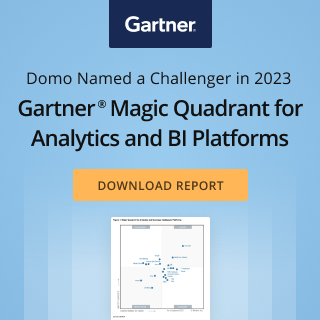A Decentralized Future – A Case For Consideration
“Reducing trial timelines has to be a long-term industry imperative, and digital technology can help valuable research continue to move forward while keeping participants safe.”
This quote by Dr. Fauci’s specifically related to the race to finding a vaccination for COVID-19, his assessment of the critical need for making quicker decisions, being more agile will bring about the next era of innovation post-pandemic is very much applicable to where many companies find themselves today — with a burning need to leverage a smarter way to perform to transform their business.

But how do organizations of all sizes address the reality of now, when they find themselves facing a host of challenges that are normally addressed in a traditional centralized approach? These challenges may be:
- A disparate workforce spread across the country or the world due to COVID-19
- An unclear and disorderly “get back to work” plan for returning to the physical office
- Workforce management that is not tailored to the new hybrid workforce paradigm
- An innovation roadmap to secure the future
Highly matrixed global organizations across the world are evaluating their existing organizational processes and assessing the pivots that can be made to the existing infrastructure without interrupting the business. For many, the future for the enterprise will be decentralization.

A recent McKinsey post reflected this thinking and the experience they’ve seen across their clients and industries they serve:
“Many leaders are reflecting on how small, nimble teams built in a hurry to deal with the COVID-19 emergency made important decisions faster and better. What companies have learned cannot be unlearned—namely, that a flatter organization that delegates decision making down to a dynamic network of teams is more effective.”
The new, decentralized way to work will be supplemented by technology and tools which will increase efficiency and productivity. For many organizations that have already taken this approach as a way to tighten costs and operations during COVID-19, decentralization will emerge as a permanent solution going forward for operations sustainability. Decentralization in practice allows for more agility and reduces risk because there is greater autonomy and company wide awareness of information that enables faster innovation — no matter what industry you operate in. But for some business leaders that may be used to a highly centralized status quo, the concept of decentralization may bring about fear of a loss of control. But company leaders need not fear decentralization in the post-COVID economy.

Let’s look at some of the most common challenges businesses are facing and how a decentralized approach can help overcome them and build enterprise resiliency:
1. A disparate workforce
Maintaining employee productivity is always one of the top priorities on every employer’s mind, even more so at a time when many organizations are doing more with less. Decentralization is equal parts process and tools. If you arm the workforce with the right tools to do their job, productivity can still be achieved at the levels needed for maximum operation.
At Domo, we know that the definition of ”productivity” is different for every company, from how many leads are generated to the amount of time spent on calls, sending emails, etc. , That’s why we’ve built a productivity indicators application that is fully customizable for what your key performance indicators are.Using the on-demand, mobile-first app, you get a real-time summary of your team’s productivity, and can even compare productivity estimates for when people are working in the office versus working at home. You can even compare these results to employees onsite to help create baseline KPI’s to make sure that you’re optimizing your efficiency across your employee footprint.
2. Assessing your get back to work plan
Not all plans are created equal, but we have made it a priority to listen and learn from various organizations and thought leaders and have built out a resource library that addresses the various issues that one can possibly face when making plans to get people back to the office or back on a “close to normal” work routine. From how to get your company ready to introduce a corporate contract tracing strategy to managing a virtual workforce. Through a decentralized approach, the responsibilities of executing these plans will not fall solely on one person, but a team of individuals that will make decisions for a wide range of situations and locations.
3. Workforce management
Prior to welcoming your employees back to the physical workplace, you must ensure that they’re briefed, up to date and compliant in regards to any new protocols resulting from COVID-19. This is where tools like training and compliance apps come to play. No matter where your employees are located, or when your company compliance training typically happens pre-pandemic, as you identify new training requirements in a quickly-changing landscape, you can launch new training modules and stream them into each employee’s required training in just minutes and make decisions specific to your team(s) as decentralization brings into play more decision making responsibilities at the mid-manager level, not just the c-suite.
4. Innovating for the future
In a decentralized organization, digital innovation will be the key driver to the success of your future. And how do you keep on top of innovation? By maintaining a real-time, single source of truth view into all levels of your organization. This is where data-backed Command Center and C-Suite level tools are so important to maintaining continuity in parallel with innovation.
“Be future ready, today. It’s important to cut through the noise and focus on the data you need to make fast, well-informed decisions for your business.”
It may not be a pandemic, it may be a natural disaster, or a disruption in the supply chain-but by operating in a decentralized model, you will be ready for whatever comes next.
